Insect screens
How to choose an insect screen?
When the summer is approaching, the desire to open the windows and enjoy the house's tranquility without mosquitoes, wasps, or flies returns. But how to choose the right insect screen to protect the home and have a well-deserved relaxation?
There are different insect screen models, each with specific characteristics. The main criteria to choose the right one are in the attributes of:
- frame
- opening/closure methods
- size of the opening
But these are not the only aspects to be considered during the choice.
This guide will explain how to choose the right insect screen according to your needs, taking into account the architectural variables of your space. After reading this guide, it will be easier to guide yourself inside a context that is anything but trivial about how to choose the right fly screen.
How to choose the insect screen based on the area to be protected?
Where will the insect screen be installed? What needs will it have to satisfy? These are the questions that will guide us in the correct choice. The reason is simple: the different rooms of the house correspond not only to additional measures but also to other closing systems specially designed for windows, doors, cellar windows, balconies, porches, and so on, from the small windows to the oversized ones up to 14 meters wide.
Let’s see together what options to consider.
Roller insect screens
Suitable for windows and door
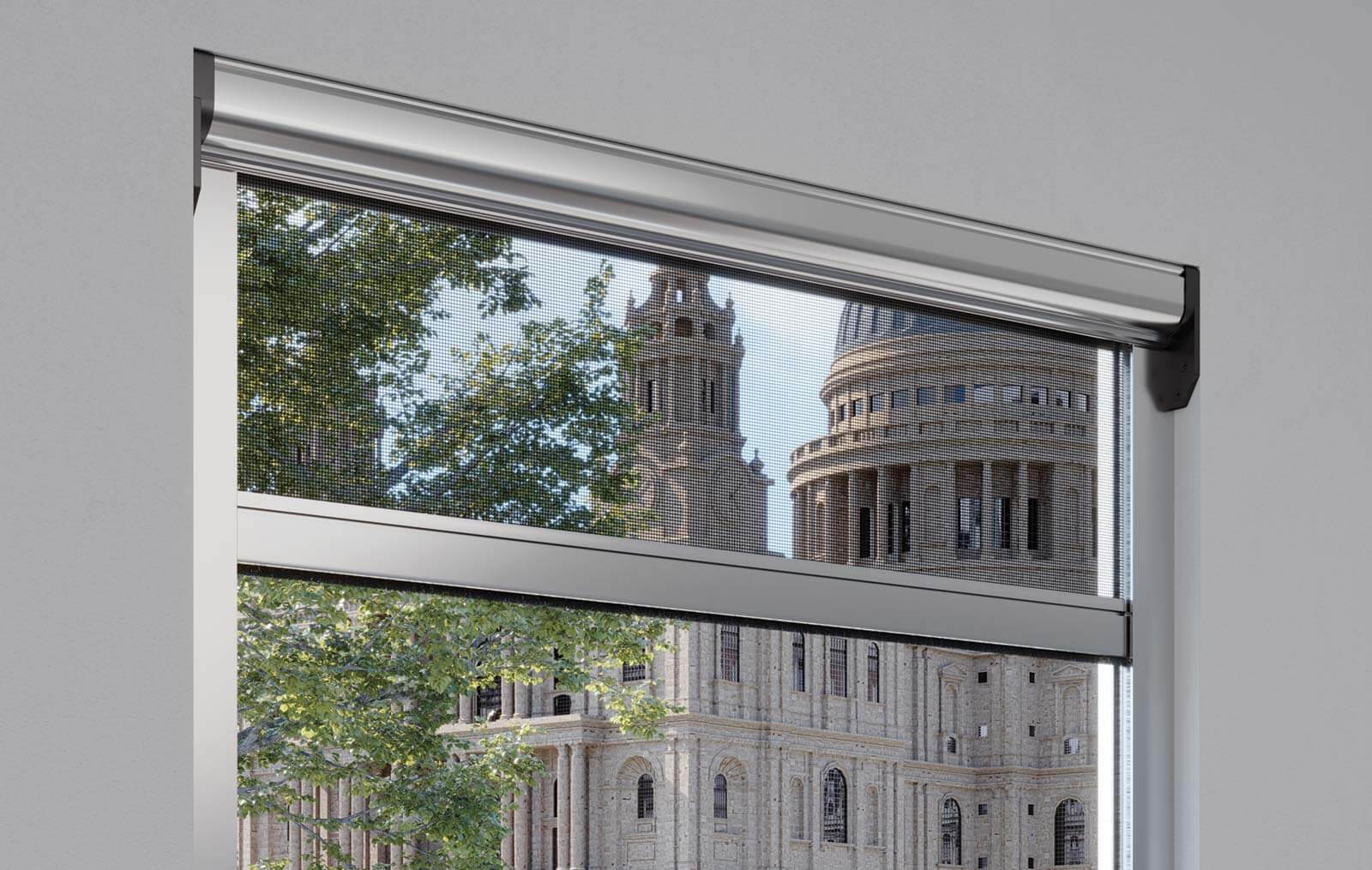
These products are traditional insect screens. They can be single or double, covering very different measures. Their opening mechanism can be manual, with chain, winch, or motor handling.
Depending on the needs, it will be possible to opt for a vertical or lateral opening.
In case of more than 4 meters wide openings, however, the insect screens always operate vertically to prevent the net from bending due to its weight.
The larger measures are equipped with zipped side guides (a system similar to dresses zips). They keep the net always tense, guarantee wind resistance, and cover up to 6/7 meters widths. This feature makes them ideal for installation on balconies.
A LED strip can be inserted upon request in the top box: an elegant solution to protect privacy since, in the evening, the direct lighting of the insect screen hinders the vision of the environment from the outside.
Explore all roller insect screens
Hinged insect screens
Suitable for access to the garden areas
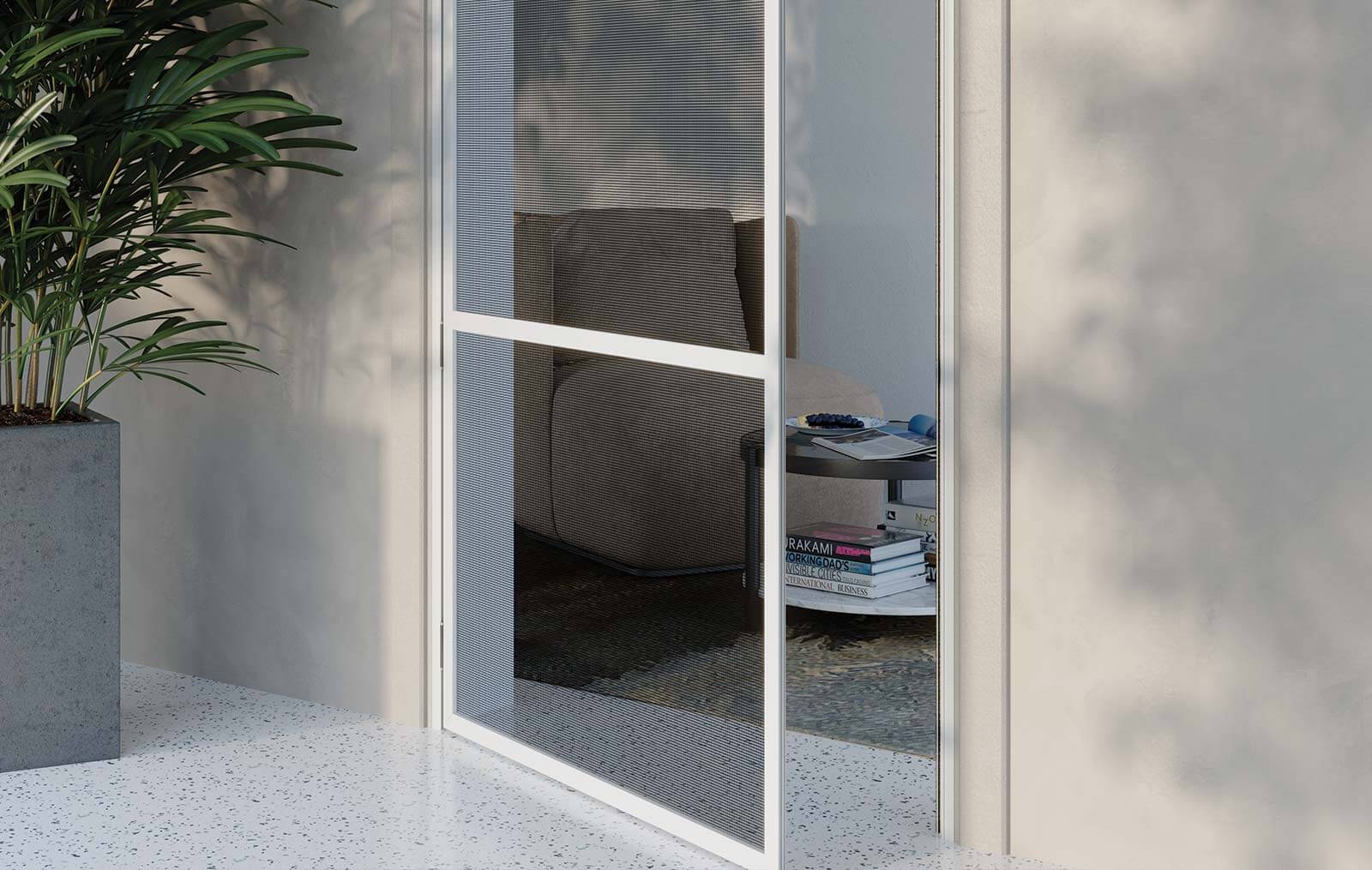
This type of insect screen follows the functioning of the classic swing door. Comfortable to use, very robust, and requires little maintenance.
Explore all hinged insect screens
Tesa Ermetica insect screens (anti-green-bugs)
Suitable for windows and porches
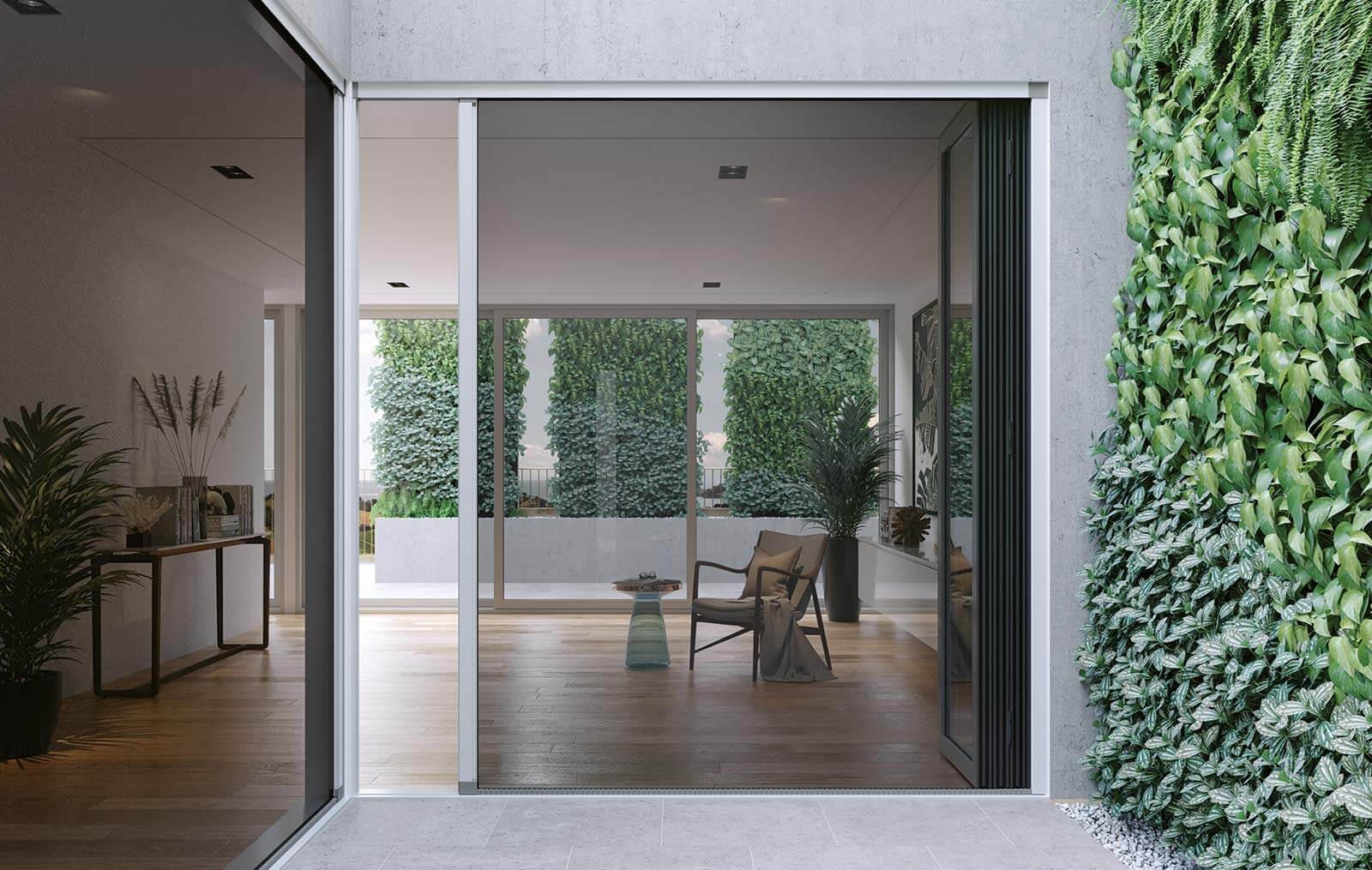
Its unique feature is the ideal model for fighting flies and green bugs.
The side guides and top box design leave no space for insects to find a home in cold months; it is an impenetrable shield. Furthermore, thanks to its parallel side guides, the mesh is always tense, even in the case of openings that are not perfectly squared off.
Ideal for all homes, Tesa Ermetica has a low anti-trip threshold (only 3 mm high), particularly suitable for people with limited mobility.
Explore all low threshold insect screens
Pleated insect screens
Suitable for openings with little installation room
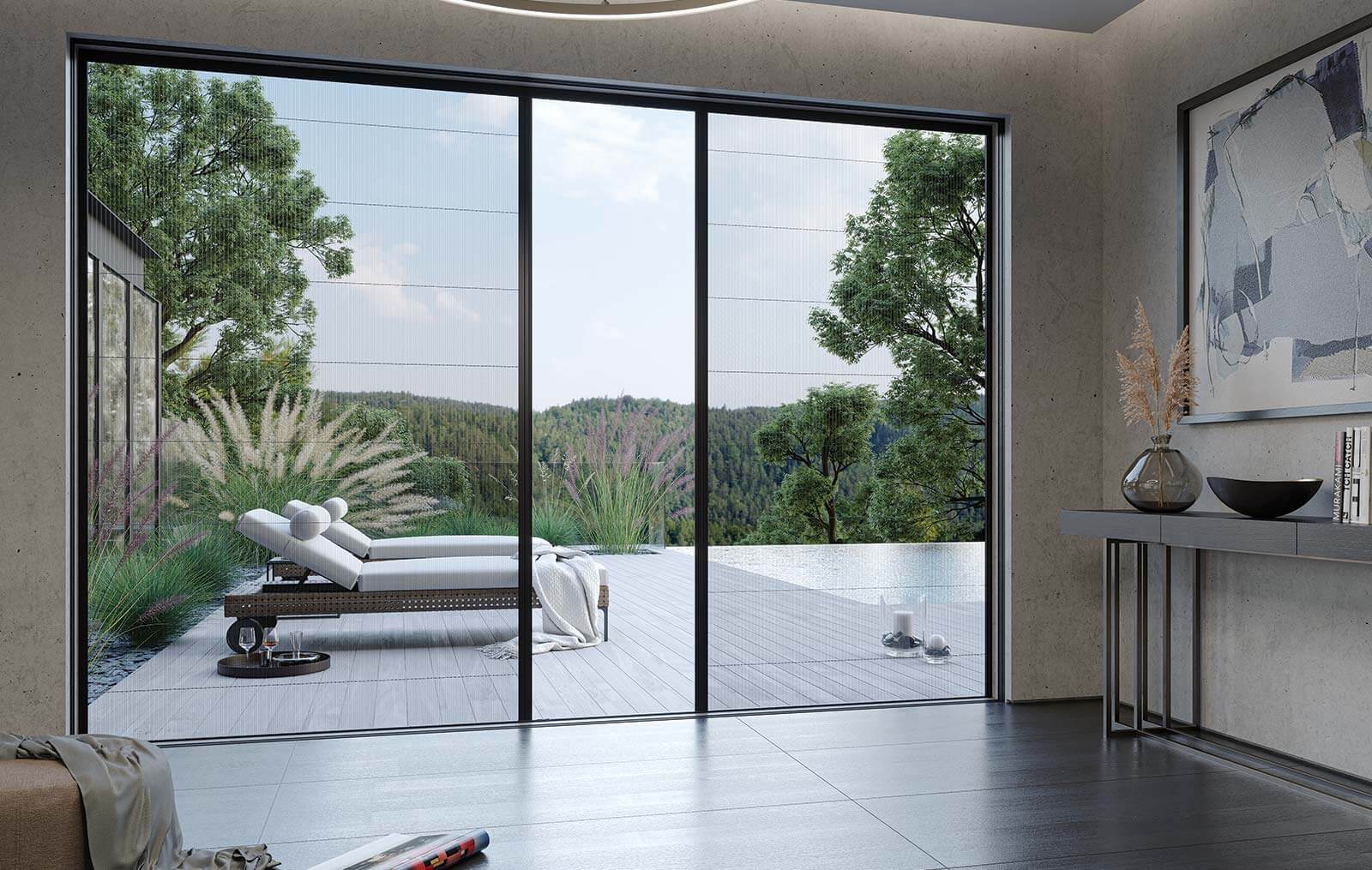
A pleated insect screen is ideal for those situations where you have little installation space. The thickness of its profile is, in fact, only 13 or 25 millimeters deep (depending on the chosen model). This feature makes it remarkably versatile and suitable for both dated windows and situations where the space must be optimized.
The low anti-trip threshold (only 3 mm high) facilitates the passage of prams and people with limited mobility.
Explore all pleated insect screens
Vertical sliding insect screens
Suitable for openings with little installation room
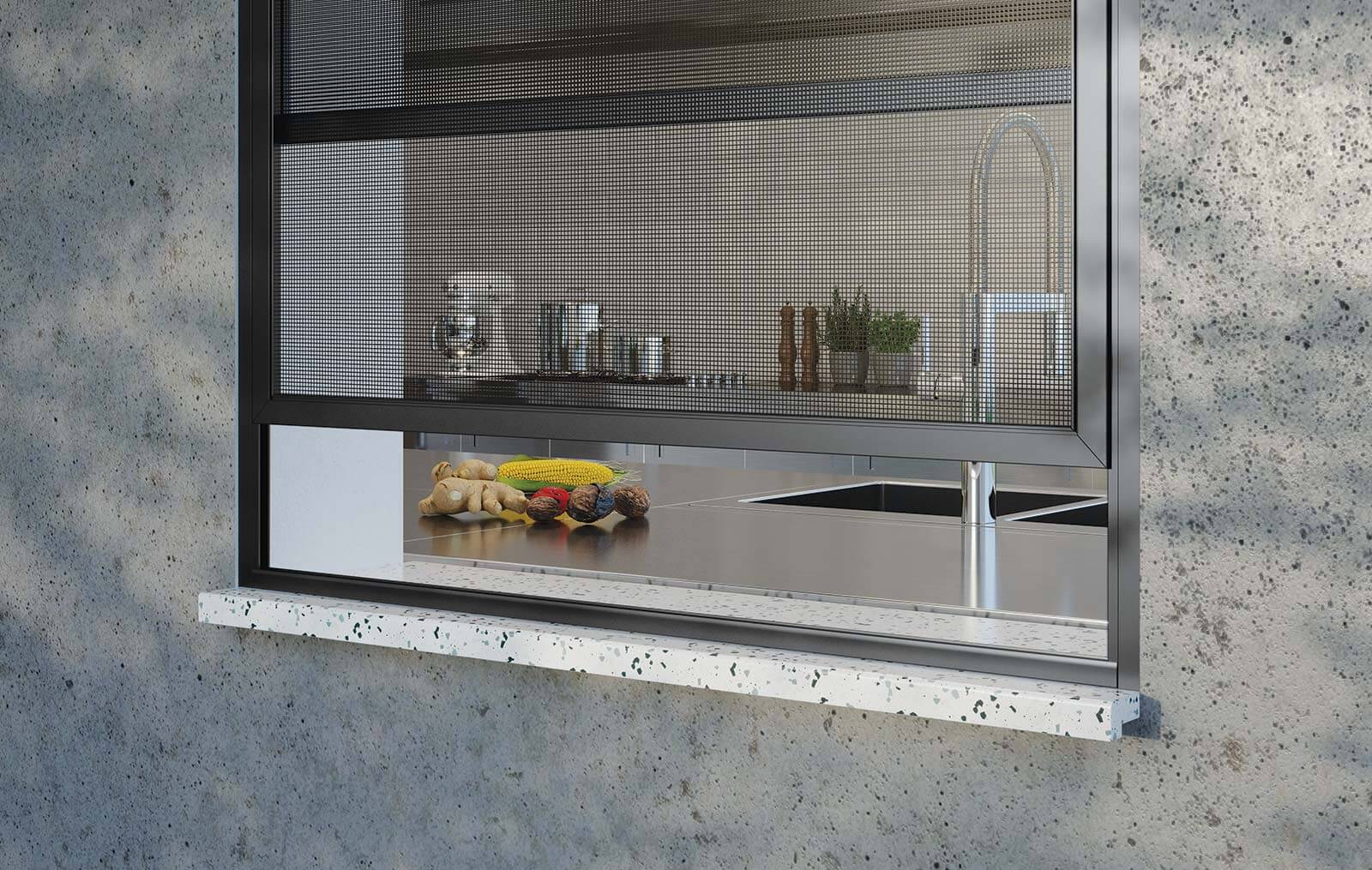
The vertical sliding insect screen, similar to the pleated one, is a convenient choice with the most straightforward functioning. A classic example is the so-called kitchen guillotine, a fixed panel above and a sliding one on tracks.
Explore all sliding insect screens
Fixed insect screens
Suitable for places where opening is not needed
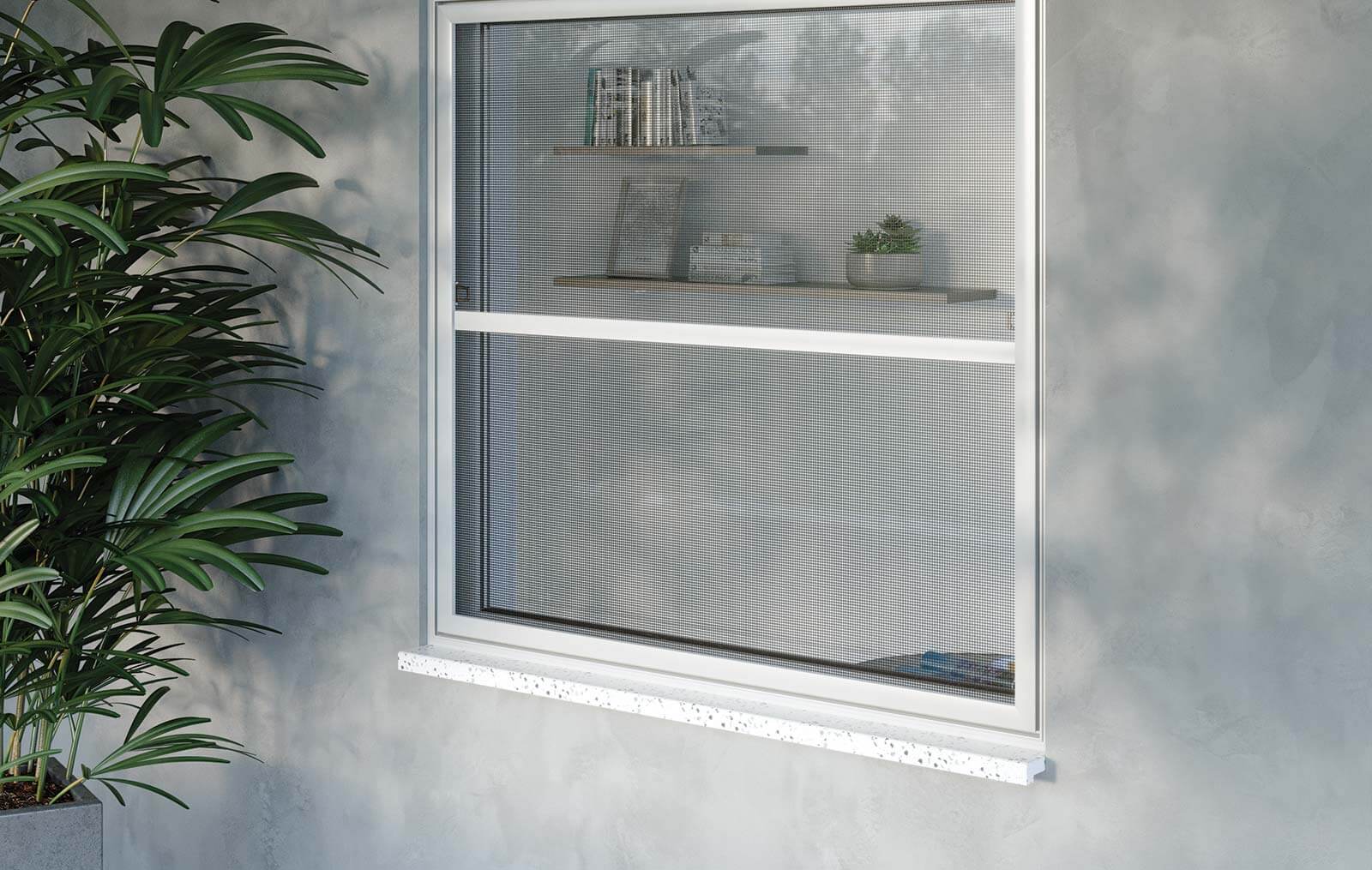
You can find this type of insect screen in little frequented areas, like cellars or storage attics. The sturdy frame can be applied or removed according to your need through a magnetic hooking system. This feature makes cleaning extremely easy. If installed in a restaurant or industrial kitchen, the insect screen should be matched with our stainless steel mesh.
Explore all fixed insect screens
How to choose the insect screen based on the profiles’s design?
A practical and beautiful insect screen is not the only means to protect yourself from dust and insects. It can also become a design feature.
Depending on the architecture and furnishing of the space, you can choose between two different types of profiles:
- rounded profiles
- squared-off profiles
The first one is indicated for the fixing outside the window frame, with a soft design and rounded lines.
If a more geometric style is preferred, it is undoubtedly possible to opt for the second profile, the squared one.
The frame’s shape does not determine changes to the product’s technical characteristics, i.e. the entire range of insect screens can equip itself with both frame types.
In terms of space, keep in mind that the width of the top box increases as you go wider.
How to choose the right insect screen based on the threshold?
The building’s shape, size, and era are decisive in understanding which insect screen will be better to install next to the existent windows. Variables correspond to different variables and criteria of choice. Here are some examples.
Contoured windows in vintage houses
If the environment is a historical dwelling, you may deal with windows whose arc openings need insect screens with customized profiles.
Windows with profile integration possibility
If the opening is wide and the window is a suitable model, the insect screen’s profiles can be installed directly inside it. It is a classic and elegant solution, and you can choose the squared-off insect screen models.
Where there is little space
Suppose, due to the confirmation of the windows, it is not possible to install the insect screen inside the window opening. In that case, the choice may fall on a front, external or internal application.
Recess-fit top boxes
These insect screen frames are often used during renovations and are installed directly inside the walls for an elegant and minimal solution.
How to choose the insect screen: different opening mechanisms
Another aspect to consider when purchasing an insect screen is the opening mechanism: depending on the assessments and the models chosen, it will be possible to open it with manual, chain, or motor handling, as well as with magnetic hooks onto the window frames.
Read also: Which mesh to combine with an insect screen?
In short, there are many aspects to take into account when you need to choose a new insect screen.
Based on our experience, the suggestion is always to consult with a qualified expert to avoid finding yourself with non-optimal solutions.